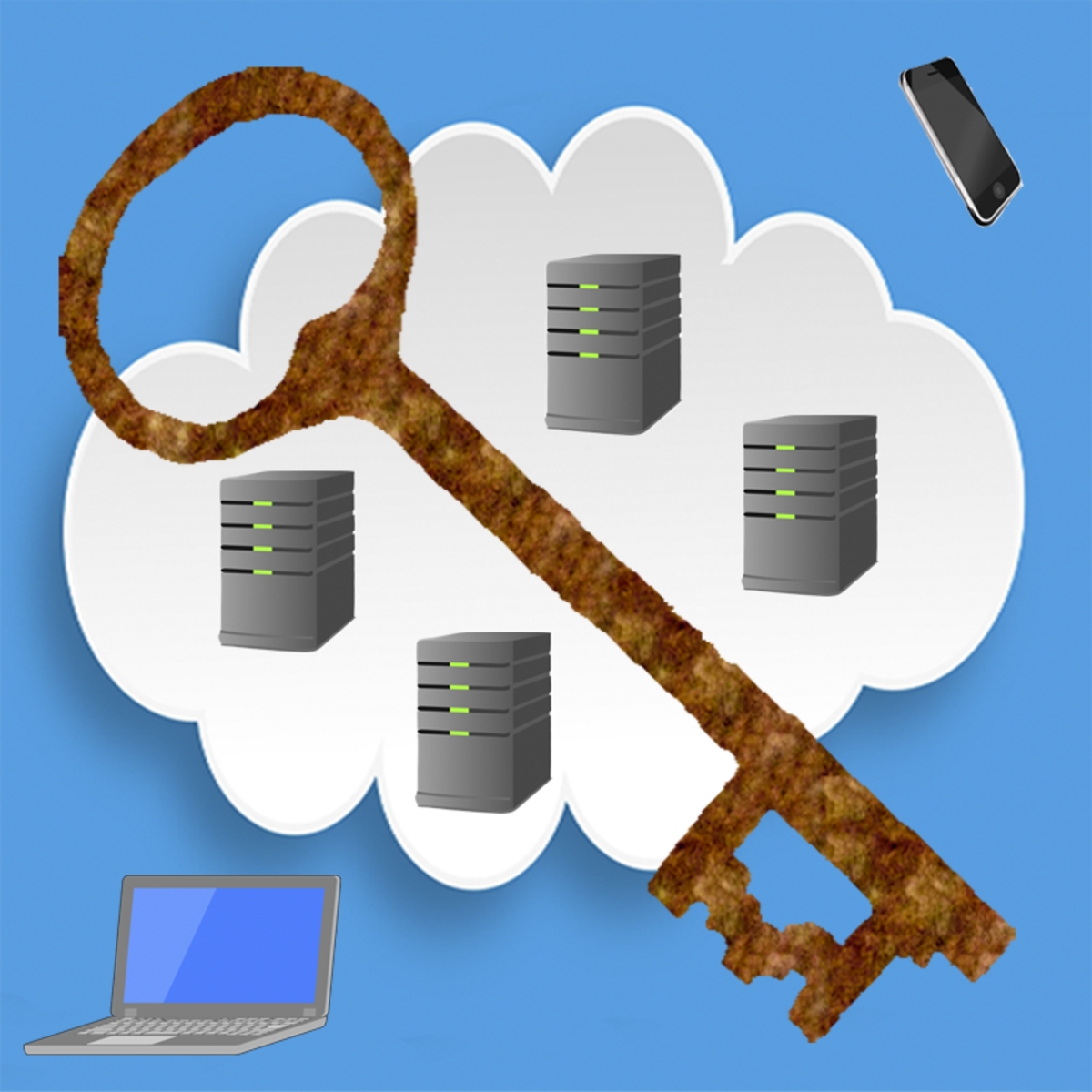Application Security Engineer
Application Security Engineer: A Comprehensive Career Guide
An Application Security Engineer is a specialized IT professional whose primary focus is to protect software applications from security threats and breaches. They are the guardians of an organization's digital assets at the application layer, working to identify vulnerabilities, design secure systems, and implement robust security measures. This role is crucial in today's technology-driven world, where applications handle sensitive data and perform critical functions for businesses and individuals alike.
Working as an Application Security Engineer can be incredibly engaging. You will often find yourself at the forefront of cybersecurity, tackling new and evolving threats. This career involves a dynamic interplay of offensive and defensive strategies, requiring you to think like an attacker to anticipate weaknesses, and then build resilient defenses. Furthermore, the collaborative nature of the role, working closely with development and operations teams, ensures a varied and stimulating work environment. The constant learning and adaptation required make it a field where stagnation is rare.
Role Overview and Core Responsibilities
Understanding the day-to-day life and core functions of an Application Security Engineer is key to determining if this path aligns with your career aspirations. This section delves into the specifics of what these professionals do.
Defining Application Security Engineering
Application Security (AppSec) Engineering is the practice of integrating security measures throughout the entire lifecycle of software applications. This means not just testing for vulnerabilities before release, but building security in from the design phase through development, deployment, and ongoing maintenance. An Application Security Engineer acts as a vital bridge between development teams and broader security objectives, ensuring that applications are not only functional but also resilient against a myriad of cyber threats.
The core mission is to minimize risk by identifying and mitigating security flaws that could be exploited by malicious actors. This involves a deep understanding of how applications are built, how they can be attacked, and how to defend them. These engineers are crucial for protecting user data, maintaining the integrity of systems, and ensuring the availability of services that rely on these applications.
For those new to the concept, imagine an application as a house. An Application Security Engineer is like a specialized architect and security consultant rolled into one. They help design the house with strong doors, windows, and alarm systems (secure design), inspect the construction for any weaknesses (code review), and regularly check for potential break-in methods (vulnerability testing) even after the house is built and occupied.
This field has gained prominence as software becomes increasingly complex and interconnected, expanding the potential attack surface for cybercriminals. Thus, the Application Security Engineer plays an indispensable role in modern software development and cybersecurity.
Key Responsibilities: Secure Code Reviews, Threat Modeling
A significant part of an Application Security Engineer's role involves conducting secure code reviews. This means meticulously examining the source code of applications to identify security flaws, logical errors, and deviations from secure coding practices. The goal is to catch vulnerabilities before the code is deployed, reducing the risk of exploitation in a live environment. This requires a strong understanding of programming languages and common coding pitfalls.
Threat modeling is another critical responsibility. This is a proactive process where engineers analyze an application's design and architecture to identify potential threats, vulnerabilities, and the potential impact of an attack. By understanding how an attacker might target the application, security measures can be prioritized and implemented more effectively. It involves thinking like an attacker to anticipate various attack vectors.
Beyond these, other key responsibilities include performing vulnerability assessments and penetration testing on applications to uncover weaknesses. They also contribute to developing security standards and guidelines for development teams and may be involved in selecting and implementing security tools. Staying updated on the latest threats and security best practices is also paramount.
These tasks ensure that security is not an afterthought but an integral part of the application's DNA, leading to more robust and trustworthy software.
To gain a deeper understanding of identifying and mitigating security vulnerabilities, consider exploring courses that cover these fundamental responsibilities.
Understanding the broader context of security engineering can also be beneficial. Many foundational principles apply across different security specializations.
Interaction with Development Teams in the Software Development Lifecycle (SDLC)
Application Security Engineers work very closely with software development teams throughout all phases of the Software Development Lifecycle (SDLC). This collaboration is essential to ensure that security is integrated from the initial design and planning stages, rather than being bolted on at the end. In the planning and requirements phase, they help define security requirements. During design, they contribute to threat modeling and secure architectural choices.
In the development phase, Application Security Engineers provide guidance on secure coding practices, conduct code reviews, and help developers understand and remediate vulnerabilities. They also play a role in the testing phase by performing security-specific tests, such as penetration testing and vulnerability scanning. Even after deployment, they are involved in monitoring for security issues and responding to incidents.
This close interaction fosters a security-aware culture within development teams. The aim is to "shift left," meaning security considerations are addressed as early as possible in the development process. This proactive approach is more effective and less costly than trying to fix security issues discovered late in the cycle or after a breach has occurred.
Effective communication and collaboration skills are therefore just as important as technical expertise for an Application Security Engineer. They need to be able to explain complex security concepts to developers in a clear and actionable way.
Courses focusing on the SDLC and the intersection of development, security, and operations (DevSecOps) can provide valuable insights into these collaborative processes.
For those interested in related career paths that also involve close collaboration with development teams, consider exploring the following:
Compliance with Standards (OWASP, NIST)
Adherence to industry standards and best practices is a cornerstone of application security. Application Security Engineers frequently rely on guidelines and frameworks from organizations like the Open Worldwide Application Security Project (OWASP) and the National Institute of Standards and Technology (NIST). These resources provide invaluable guidance on identifying and mitigating common security risks.
OWASP is a non-profit foundation that works to improve software security. They are well-known for resources like the OWASP Top 10, a regularly updated list of the most critical security risks to web applications. Application Security Engineers use the OWASP Top 10 and other OWASP projects (like the Application Security Verification Standard (ASVS) or various testing guides) as benchmarks for assessing and improving application security.
NIST, a U.S. Department of Commerce agency, develops cybersecurity standards, guidelines, and best practices. The NIST Cybersecurity Framework, for example, provides a high-level structure for organizations to assess and improve their cybersecurity posture. While broader than just application security, its principles are highly relevant. NIST also publishes Special Publications (SPs) that offer detailed guidance on various security topics, including secure software development.
Ensuring compliance with these standards, as well as relevant legal and regulatory requirements (which will be discussed later), is a key responsibility. This helps organizations build more secure applications, reduce risk, and demonstrate due diligence in protecting sensitive information.
Several online courses focus specifically on OWASP guidelines and secure coding practices aligned with these standards.
To deepen your understanding of these crucial standards, exploring topics related to them is recommended.
Technical Skill Requirements
A successful career as an Application Security Engineer hinges on a strong foundation of technical skills. These competencies enable professionals to effectively identify, analyze, and mitigate security risks within software applications.
Secure Coding Practices Across Multiple Languages
A fundamental requirement for an Application Security Engineer is a strong understanding of secure coding practices. This involves knowing how to write code that is resilient to common vulnerabilities like injection flaws, broken authentication, cross-site scripting (XSS), and insecure deserialization. It's not just about knowing what not to do, but proactively building defenses into the code itself.
Proficiency often needs to span across multiple programming languages. While an engineer might specialize in a particular language stack (e.g., Java, Python, .NET, JavaScript), understanding the security nuances of several languages is highly beneficial. Different languages have different common pitfalls and attack vectors. For example, memory management vulnerabilities might be more prevalent in C/C++, while XSS might be a common concern in web applications built with JavaScript frameworks.
This skill involves more than just syntax; it requires understanding how data is handled, how authentication and authorization are implemented, how input is validated, and how cryptographic functions are used (or misused). Engineers must be able to review code written by others and provide actionable recommendations for improvement.
Many online courses are dedicated to teaching secure coding principles in various languages, which are invaluable for aspiring and practicing engineers.
Delving into books that focus on secure coding standards can also provide comprehensive knowledge.
Understanding the broader topic of secure software development is also essential.
Vulnerability Assessment Techniques
Vulnerability assessment is the process of identifying, quantifying, and prioritizing vulnerabilities in a system or application. Application Security Engineers must be adept at various techniques to uncover these weaknesses before attackers can exploit them. This is a core competency that involves both automated tools and manual analysis.
Techniques can range from automated scanning using Static Application Security Testing (SAST) and Dynamic Application Security Testing (DAST) tools, to more manual methods like penetration testing and security code reviews (as discussed earlier). SAST tools analyze an application's source code or binary without executing it, looking for known vulnerability patterns. DAST tools test an application in its running state, often by sending crafted inputs to simulate attacks.
Beyond identifying vulnerabilities, engineers need to understand their potential impact and the likelihood of exploitation. This helps in prioritizing remediation efforts, focusing on the most critical issues first. Effective vulnerability assessment also involves clear reporting of findings to development teams and management, along with recommendations for mitigation. Staying current with new vulnerability types and assessment methodologies is crucial in this rapidly evolving landscape.
Online courses often cover various vulnerability assessment techniques and tools, providing hands-on experience.
Books dedicated to hacking and penetration testing can offer in-depth knowledge on these assessment techniques.
Exploring the topic of vulnerability scanning can further enhance your understanding in this area.
Cloud Security Architecture Knowledge
As more applications are deployed in cloud environments (like AWS, Azure, and Google Cloud), cloud security architecture knowledge has become increasingly vital for Application Security Engineers. Securing applications in the cloud presents unique challenges and opportunities compared to traditional on-premises environments. Engineers need to understand the shared responsibility model, where the cloud provider is responsible for the security of the cloud, while the customer is responsible for security in the cloud.
This includes understanding cloud-native security services, such as Identity and Access Management (IAM), security groups, network ACLs, web application firewalls (WAFs), and key management services. They also need to be familiar with securing containerized applications (e.g., Docker, Kubernetes) and serverless architectures, which are prevalent in cloud deployments.
Knowledge of how to configure these services securely, monitor cloud environments for threats, and ensure compliance with relevant standards in a cloud context is essential. Misconfigurations in cloud services are a common source of security breaches, making this area a critical focus for AppSec professionals.
You can build a strong foundation in cloud application security through specialized online courses.
Books on cloud security offer comprehensive insights into designing and maintaining secure cloud architectures.
For those particularly interested in this domain, exploring the topic of cloud application security and related careers can be beneficial.
Cryptography Fundamentals
A solid understanding of cryptography fundamentals is essential for Application Security Engineers. Cryptography is the science of secure communication, and it underpins many of the security mechanisms used to protect data in applications, both at rest (stored data) and in transit (data being transmitted over a network).
Engineers don't typically need to invent new cryptographic algorithms, but they must understand core concepts like symmetric and asymmetric encryption, hashing, digital signatures, and public key infrastructure (PKI). They need to know when and how to apply these cryptographic techniques correctly, and perhaps more importantly, how not to apply them, as improper implementation can lead to severe vulnerabilities.
This includes understanding the strengths and weaknesses of different algorithms, managing cryptographic keys securely, and ensuring that sensitive data is encrypted according to industry best practices and compliance requirements. They might also be involved in identifying and mitigating vulnerabilities related to cryptographic failures, such as using weak algorithms or insecure key management practices.
Online courses can help demystify cryptographic concepts and their practical applications in security.
Several authoritative books delve deeply into the principles and practices of cryptography.
Tools and Technologies
Application Security Engineers rely on a diverse toolkit to perform their duties effectively. Familiarity with these tools and the underlying technologies is crucial for identifying vulnerabilities, automating security processes, and integrating security into the development pipeline.
Static/Dynamic Analysis Tools (SAST/DAST)
Static Application Security Testing (SAST) tools analyze an application's source code, byte code, or binary code without actually executing it. These tools are excellent for finding vulnerabilities like SQL injection, cross-site scripting (XSS), buffer overflows, and insecure cryptographic implementations directly in the codebase. SAST can be integrated early in the SDLC, allowing developers to identify and fix issues before code is even deployed to a testing environment.
On the other hand, Dynamic Application Security Testing (DAST) tools test an application while it is running. They simulate attacks against a live application, sending various inputs and observing the responses to identify vulnerabilities. DAST tools are effective at finding runtime issues, configuration errors, and vulnerabilities that only manifest when the application is operational. They provide an outside-in view of the application's security posture.
Application Security Engineers use both SAST and DAST tools as complementary approaches. SAST provides a white-box perspective by looking at the internal workings, while DAST offers a black-box perspective by interacting with the application as an attacker would. Integrating these tools into the CI/CD pipeline helps automate security testing and provide rapid feedback to developers.
Learning about these tools and how to interpret their results is a key skill. Many online courses introduce these concepts and provide hands-on experience with popular security testing tools.
Penetration Testing Frameworks
Penetration testing frameworks are collections of tools, exploits, and methodologies used to simulate real-world attacks against applications and infrastructure. These frameworks help Application Security Engineers (and dedicated Penetration Testers) systematically probe for vulnerabilities and assess the effectiveness of security controls. By mimicking the actions of an attacker, they can identify weaknesses that might be missed by automated scanners.
Popular frameworks include Metasploit, Burp Suite, and OWASP ZAP. Metasploit is widely used for developing and executing exploit code against remote targets. Burp Suite is a comprehensive platform for web application security testing, offering tools for proxying traffic, scanning for vulnerabilities, and performing various manual tests. [77jfkx] OWASP ZAP (Zed Attack Proxy) is an open-source web application security scanner that helps find vulnerabilities during development and testing. [s0ghy1]
Familiarity with these frameworks, understanding how to use their various modules, and interpreting their results are critical skills. Penetration testing provides a practical assessment of an application's security, going beyond theoretical vulnerabilities to demonstrate actual exploitability.
Courses that cover ethical hacking and penetration testing often provide in-depth training on these frameworks.
Exploring various aspects of web application security testing can provide a comprehensive understanding of how these frameworks are applied.
Container Security Solutions
With the rise of containerization technologies like Docker and orchestration platforms like Kubernetes, container security solutions have become indispensable. Containers offer many benefits for application deployment, but they also introduce new security considerations. Application Security Engineers need to understand how to secure container images, container runtimes, and the orchestration platforms managing them.
This involves scanning container images for known vulnerabilities in base images and application dependencies. It also includes configuring runtime security to restrict container capabilities, monitor for suspicious activity, and enforce network segmentation. Securing the Kubernetes control plane and worker nodes, implementing proper network policies, and managing secrets securely are also critical aspects of container security.
Tools like Aqua Security, Trivy, Clair, and Falco are commonly used for container image scanning, runtime protection, and threat detection. Understanding how to integrate these solutions into the CI/CD pipeline and DevSecOps workflows is essential for maintaining security in containerized environments.
Specific courses can help you develop expertise in securing containerized applications and Kubernetes environments.
Books focusing on container security can provide detailed guidance on best practices and tools.
CI/CD Pipeline Integration Tools
Integrating security into the Continuous Integration/Continuous Delivery (CI/CD) pipeline is a core tenet of DevSecOps and a key responsibility for Application Security Engineers. This involves embedding automated security testing and validation at various stages of the software development and deployment process.
Tools that facilitate this integration include SAST and DAST scanners, dependency checkers (to find vulnerabilities in third-party libraries), infrastructure-as-code (IaC) scanners, and compliance checking tools. These tools can be configured to run automatically whenever code is committed, built, or deployed, providing rapid feedback to developers about potential security issues.
The goal is to make security an automated and seamless part of the development workflow, rather than a manual bottleneck. This allows for faster delivery of secure software. Application Security Engineers work with DevOps teams to select, implement, and configure these tools within the pipeline, and to define security gates that prevent vulnerable code from reaching production. Understanding platforms like Jenkins, GitLab CI, GitHub Actions, and how to incorporate security tools into their workflows is crucial.
Courses that explore DevSecOps principles and practices often cover the integration of security tools into CI/CD pipelines.
Many learners find value in exploring topics related to IT & Networking and Cybersecurity to build a holistic understanding of the ecosystem in which these tools operate.
Career Progression Pathways
The journey of an Application Security Engineer offers diverse opportunities for growth and specialization. Understanding these pathways can help aspiring and current professionals plan their career trajectory effectively.
Entry-Level to Senior Engineer Progression
The path to becoming an Application Security Engineer often starts with foundational roles in IT or software development. Positions such as Junior Developer, Security Analyst, or Network Administrator can provide the necessary groundwork and experience. These entry-level roles help build a strong understanding of software development processes, networking fundamentals, and basic security principles.
As individuals gain experience and specialized knowledge in application security, they can transition into roles like Junior Application Security Analyst or Engineer. In these positions, they typically work under the guidance of senior engineers, focusing on tasks like running security scans, assisting with code reviews, and learning about threat modeling.
With a few years of dedicated experience (often 2-4 years in entry-level security or development roles), one can move into a full-fledged Application Security Engineer role. Responsibilities expand to include leading secure code reviews, conducting penetration tests, designing security controls, and working more independently with development teams.
Further progression leads to Senior Application Security Engineer roles. Seniors often take on more complex projects, mentor junior team members, contribute to security strategy, and may specialize in specific areas of application security. They are expected to have a deep understanding of various security domains and the ability to influence security practices across the organization.
To understand what it takes to move into these roles, consider exploring foundational courses in cybersecurity and software development.
Gaining a broad understanding of computer security is essential for this career path.
Specialization Opportunities (Cloud Security, DevSecOps)
As Application Security Engineers gain experience, they often find opportunities to specialize in high-demand areas. Cloud Security is a prominent specialization, focusing on securing applications and infrastructure deployed in cloud environments like AWS, Azure, or GCP. This involves expertise in cloud-native security services, container security, and serverless security architectures. Given the widespread adoption of cloud computing, this is a rapidly growing field.
DevSecOps is another significant specialization, emphasizing the integration of security throughout the DevOps lifecycle. DevSecOps engineers focus on automating security testing, embedding security controls into CI/CD pipelines, and fostering a culture of shared security responsibility between development, security, and operations teams. This role is crucial for organizations aiming to deliver secure software at speed.
Other potential specializations include mobile application security, API security, IoT security, or focusing on specific types of security testing like advanced penetration testing or reverse engineering. Some engineers might also specialize in secure software development for particular industries with unique regulatory requirements, such as finance or healthcare.
These specializations allow engineers to deepen their expertise in a niche area, often leading to more senior and impactful roles. Pursuing specialized certifications and training can aid in developing these focused skill sets.
Courses tailored to these specializations can pave the way for focused career growth.
Leadership Roles in Security Architecture
Experienced Application Security Engineers with a strong grasp of security principles, risk management, and system design can progress into leadership roles focused on Security Architecture. A Security Architect is responsible for designing and overseeing the implementation of an organization's overall security infrastructure. This includes defining security standards, policies, and procedures, and ensuring that new systems and applications are built with security in mind from the ground up.
In this capacity, they provide strategic direction for security initiatives, evaluate new security technologies, and work with various stakeholders, including business leaders, IT teams, and developers, to ensure that security objectives align with business goals. They need a holistic view of the organization's technology landscape and the ability to design security solutions that are both effective and practical.
Moving into a Security Architect role often requires significant experience, a deep technical background, and strong leadership and communication skills. These professionals play a critical role in shaping the organization's long-term security posture and resilience against evolving threats.
For those aspiring to leadership in security architecture, advanced courses and a deep understanding of security engineering principles are essential.
Reading about security engineering from a broader perspective can provide foundational knowledge for architectural roles.
Related careers in software and security architecture can also be considered.
Cross-Functional Movement into Product Security
Application Security Engineers may also find opportunities to move into roles focused specifically on Product Security. While closely related to application security, product security often has a broader scope, encompassing the security of an entire product or product line, which might include hardware, firmware, and software components, as well as the services and infrastructure that support them.
A Product Security Engineer or Manager works closely with product development teams throughout the entire product lifecycle, from conception to end-of-life. They champion security requirements, conduct risk assessments, drive secure design and development practices, and manage responses to product vulnerabilities. This role requires a deep understanding of the product's functionality, its users, and the specific threats it might face.
This cross-functional movement leverages the AppSec Engineer's technical skills while requiring stronger collaboration with product management, engineering, legal, and marketing teams. It's an appealing path for those who want to have a direct impact on the security of the products and services an organization delivers to its customers.
Building a strong foundation in application security is key to transitioning into product-focused security roles.
Understanding how security intersects with the software development lifecycle is crucial for such roles. You can learn more by exploring online courses on Programming which often cover different aspects of software development.
Education and Certification Paths
Embarking on a career as an Application Security Engineer, or advancing within the field, often involves a combination of formal education, industry certifications, and a commitment to continuous learning. This section outlines common educational routes and valuable credentials.
Relevant Computer Science Degrees
A bachelor's degree in Computer Science, Cybersecurity, Information Technology, or a related engineering field is a common starting point for aspiring Application Security Engineers. These programs typically provide a strong foundation in programming, data structures, algorithms, operating systems, and networking – all of which are crucial for understanding how applications work and how they can be secured.
Some universities now offer specialized cybersecurity degrees or concentrations that include courses specifically on application security, secure coding, and ethical hacking. These can provide a more direct path into the field. However, a general computer science degree coupled with self-study and practical experience in security can also be very effective.
For those seeking to advance into leadership or highly specialized roles, a master's degree in Cybersecurity or a related field can be beneficial. Advanced degrees often delve deeper into security architecture, risk management, and emerging security technologies. Regardless of the specific degree, employers generally look for candidates with strong problem-solving skills, analytical abilities, and a passion for technology and security.
Online courses can supplement formal education by providing specialized knowledge in areas directly relevant to application security, which may not be covered in depth in all university curricula.
Exploring foundational topics in computer science can complement your degree program.
Security Certifications (CISSP, OSCP, CSSLP)
Industry certifications are highly valued in the cybersecurity field and can significantly enhance an Application Security Engineer's credentials. The Certified Information Systems Security Professional (CISSP) from (ISC)² is a globally recognized certification that covers a broad range of security topics, including security and risk management, asset security, security architecture and engineering, and software development security. While not solely focused on application security, it demonstrates a comprehensive understanding of information security principles.
The Offensive Security Certified Professional (OSCP) is a hands-on certification that tests practical penetration testing skills. It requires candidates to successfully attack and penetrate various live machines in a lab environment. The OSCP is highly respected for its rigorous practical exam and demonstrates a strong ability to identify and exploit vulnerabilities, a key skill for AppSec engineers involved in testing.
The Certified Secure Software Lifecycle Professional (CSSLP), also from (ISC)², is specifically focused on application security and validating expertise in incorporating security practices into each phase of the software development lifecycle (SDLC). This certification covers secure software concepts, requirements, design, implementation/coding, testing, and deployment/operations/maintenance. It is particularly relevant for Application Security Engineers.
Other valuable certifications include those from GIAC (Global Information Assurance Certification), such as the GWAPT (GIAC Web Application Penetration Tester) or GWEB (GIAC Certified Web Application Defender), and vendor-specific certifications if you work heavily with particular security products.
Many online courses are designed to help professionals prepare for these challenging certification exams.
Exploring related career paths like Penetration Tester can also provide context for the value of these certifications.
Cloud Security Certifications (CCSP, AWS Security)
As cloud computing becomes ubiquitous, certifications focused on cloud security are increasingly important for Application Security Engineers, especially those specializing in securing cloud-native applications. The Certified Cloud Security Professional (CCSP) from (ISC)² is a globally recognized credential that validates advanced skills and knowledge to design, manage, and secure data, applications, and infrastructure in the cloud using best practices, policies, and procedures established by cloud security experts.
Vendor-specific cloud security certifications are also highly valuable. For example, AWS Certified Security - Specialty validates expertise in securing the AWS platform. Google Cloud offers the Professional Cloud Security Engineer certification, and Microsoft has the Azure Security Engineer Associate (related to exam AZ-500). These certifications demonstrate proficiency in using the specific security tools and services offered by each cloud provider.
These certifications are beneficial for AppSec engineers who are responsible for securing applications deployed on these platforms, ensuring proper configuration of cloud security controls, and managing identity and access in cloud environments. They signal to employers a strong understanding of the unique security challenges and solutions associated with cloud computing.
Specialized online training can help you prepare for these cloud security certifications.
Understanding cloud armor and identity management are key components of cloud security.
Continuous Learning Strategies
The field of application security is constantly evolving, with new threats, vulnerabilities, and technologies emerging regularly. Therefore, a commitment to continuous learning is not just beneficial but essential for a successful career as an Application Security Engineer. This involves staying updated on the latest security news, research, and best practices.
Strategies for continuous learning include following reputable security blogs and news sites, participating in online forums and communities, attending industry conferences and webinars, and regularly reading security research papers and books. Many engineers also benefit from hands-on learning by participating in Capture The Flag (CTF) competitions, working on personal security projects, or contributing to open-source security tools.
Online learning platforms like OpenCourser play a crucial role by offering a vast array of courses on new technologies, security tools, and emerging threat landscapes. These platforms allow professionals to upskill and reskill at their own pace, acquiring new knowledge and certifications as needed. Regularly taking courses on topics like new programming language security features, advanced penetration testing techniques, or the security implications of AI and machine learning can keep an engineer's skills sharp and relevant.
Employers value candidates who can demonstrate a proactive approach to learning and adapting to the ever-changing cybersecurity domain. This commitment ensures that they can effectively protect applications against the latest and most sophisticated attacks.
Engaging with new and updated courses is a great way to stay current.
For a structured approach to self-learning, explore the resources available on the OpenCourser Learner's Guide, which offers tips on creating curricula and staying disciplined.
Industry Demand and Compensation
Understanding the job market landscape and earning potential is a practical and important consideration for anyone contemplating a career as an Application Security Engineer. This field generally offers strong prospects due to the critical nature of cybersecurity.
Current Market Demand Analysis
The demand for Application Security Engineers remains robust, driven by the increasing reliance on software applications across all industries and the corresponding rise in cyber threats. As businesses undergo digital transformation and move more operations online, the need to secure their applications and protect sensitive data has become paramount. Breaches can lead to significant financial losses, reputational damage, and legal liabilities, making skilled AppSec professionals highly sought after.
According to the U.S. Bureau of Labor Statistics (BLS), employment for information security analysts (a category that often includes application security roles) is projected to grow significantly faster than the average for all occupations. While some reports indicate fluctuations in overall cybersecurity job postings, specialized roles within application security, particularly those related to cloud and DevSecOps, continue to see strong interest. The global shortage of cybersecurity professionals further amplifies the demand for those with specialized AppSec skills.
Organizations are increasingly recognizing that security cannot be an afterthought and are investing in building dedicated application security teams or integrating security expertise within their development processes. This trend fuels the ongoing need for engineers who can bridge the gap between development and security.
For those considering this career, the outlook is generally positive, with ample opportunities across various sectors, including finance, healthcare, technology, and e-commerce. Exploring career development resources can provide further insights into navigating this job market.
Salary Ranges by Experience Level
Compensation for Application Security Engineers is generally competitive, reflecting the specialized skills and high demand for these professionals. Salaries can vary significantly based on factors such as years of experience, geographic location, industry, company size, and specific skill set.
Entry-level positions, or those with a few years of relevant experience, can expect a solid starting salary. As engineers gain more experience, particularly in areas like secure code review, penetration testing, and threat modeling, their earning potential increases. Mid-level Application Security Engineers with several years of experience typically command higher salaries.
Senior Application Security Engineers, Principal Engineers, and those in leadership or specialized roles (like Cloud Security Architect or DevSecOps Lead) are at the higher end of the pay scale. According to data from various sources like ZipRecruiter and Salary.com, the average annual salary for an Application Security Engineer in the United States can range significantly, with typical figures often falling between $90,000 and $160,000, and some senior roles exceeding $180,000 or more. For instance, ZipRecruiter notes an average hourly pay around $66.40 as of May 2025, with ranges from approximately $56 to $75 per hour for the majority of positions. Salary.com reported an average annual salary of around $96,772 as of May 2025, with ranges typically between $87,523 and $105,673. Built In reports an average salary for Security Engineers in the US around $129,059, with ranges from $55K to $305K depending on specific roles and experience.
It's important to research salary data specific to your region and experience level using up-to-date resources. Continuous skill development and relevant certifications can also positively impact earning potential.
For those looking to enter or advance in this field, understanding typical compensation is a key part of career planning.
Industry-Specific Compensation Variations
Compensation for Application Security Engineers can also differ based on the industry in which they work. Certain sectors, often those that handle highly sensitive data or are subject to stringent regulatory requirements, may offer higher salaries to attract and retain top security talent. For example, the finance, healthcare, and defense industries typically place a high premium on robust security measures.
Technology companies, especially those developing software products or cloud services, also tend to offer competitive compensation packages due to the critical role of application security in their offerings. E-commerce and other online businesses that process large volumes of customer data and financial transactions also recognize the importance of strong application security, which can be reflected in salary levels.
Conversely, compensation might be different in non-profit organizations or some public sector roles, although the importance of security is recognized across all sectors. The complexity of the applications, the potential impact of a security breach, and the overall budget of the organization can all influence salary scales within specific industries.
When researching career opportunities, it's beneficial to consider how industry-specific demands and risk profiles might affect compensation for Application Security Engineers. Aspiring professionals might find that specializing in the security needs of a particular industry can lead to more lucrative opportunities.
Remote Work Impact on Opportunities
The rise of remote work has had a significant impact on opportunities for Application Security Engineers. Cybersecurity roles, including application security, are often well-suited to remote work arrangements due to the nature of the tasks, which primarily involve working with code, systems, and tools that can be accessed from anywhere with a secure connection. This has broadened the talent pool for employers and increased the range of opportunities available to job seekers, who are no longer geographically constrained.
Many companies, from startups to large enterprises, now offer remote or hybrid positions for Application Security Engineers. This flexibility can be a major draw for professionals seeking better work-life balance or opportunities with companies located outside their immediate geographic area. However, it also means that competition for remote roles can be more intense, as candidates from a wider area may apply.
For remote Application Security Engineers, strong communication skills, self-discipline, and the ability to collaborate effectively with distributed teams become even more critical. Companies hiring for remote security roles will look for individuals who are proactive, can manage their time effectively, and can maintain high levels of productivity without direct in-person supervision. The availability of remote work has arguably made the field more accessible and dynamic.
If you are interested in remote work, OpenCourser features a vast catalog of online courses that can be taken from anywhere, allowing you to develop the skills needed for these flexible roles.
Operational Challenges
While a career as an Application Security Engineer can be rewarding, it also comes with its share of operational challenges. Understanding these hurdles can help professionals prepare for the realities of the workplace and develop strategies to navigate them effectively.
Balancing Security with Development Velocity
One of the most persistent challenges for Application Security Engineers is striking the right balance between implementing robust security measures and maintaining the speed of software development and delivery (development velocity). In today's fast-paced Agile and DevOps environments, development teams are under pressure to release new features and updates quickly. Security processes, if not implemented efficiently, can be perceived as a bottleneck, leading to friction.
The key is to integrate security seamlessly into the development workflow (DevSecOps) rather than treating it as a separate, time-consuming phase. This involves automating security testing, providing developers with tools and training to write secure code from the start, and fostering a collaborative relationship where security is seen as a shared responsibility.
Application Security Engineers must be pragmatic and risk-focused, prioritizing security efforts based on the potential impact on the business. They need to find solutions that provide adequate protection without unduly hindering innovation or slowing down the release cycle. This often requires strong communication, negotiation, and problem-solving skills.
Courses that focus on DevSecOps and agile methodologies can provide valuable insights into addressing this challenge.
Legacy System Vulnerabilities
Many organizations rely on legacy systems and applications that were built years, or even decades, ago, often without modern security considerations in mind. These older systems can be a significant source of vulnerabilities and pose a considerable challenge for Application Security Engineers. Patching or updating legacy systems can be difficult due to outdated technology, lack of vendor support, or fear of breaking critical business functions.
Addressing security in legacy applications often requires a different approach than with new development. This might involve implementing compensating controls, such as web application firewalls (WAFs) or network segmentation, to protect these systems from external threats. It could also involve carefully planned and phased modernization efforts, which can be complex and resource-intensive.
Application Security Engineers working with legacy systems need to be adept at understanding older technologies, identifying creative ways to mitigate risks, and effectively communicating the security posture of these systems to stakeholders. They may also need to perform in-depth vulnerability analysis on systems with limited documentation or source code access.
Understanding how to manage vulnerabilities in existing systems is a crucial skill.
Third-Party Component Risks
Modern applications are rarely built entirely from scratch. They often rely heavily on third-party components, such as open-source libraries, frameworks, and commercial software development kits (SDKs). While these components can accelerate development, they also introduce potential security risks if they contain vulnerabilities.
A significant challenge for Application Security Engineers is managing the security of these third-party dependencies. A vulnerability in a widely used library can affect thousands of applications. Engineers need to implement processes for tracking the components used in their applications, scanning them for known vulnerabilities (often referred to as Software Composition Analysis or SCA), and ensuring that vulnerable components are updated or replaced promptly.
This requires vigilance and a proactive approach to a software supply chain security. It's not enough to secure the code written in-house; the security of all integrated components must also be considered. This involves staying informed about newly discovered vulnerabilities in common libraries and having a plan to address them quickly when they arise.
Courses focusing on software security and dependency management can help address these third-party risks.
Books on software security engineering can also provide a broader perspective on managing these risks.
Emerging Threat Landscape
The cybersecurity threat landscape is constantly evolving. Attackers are continually developing new techniques, exploiting novel vulnerabilities, and targeting emerging technologies. This dynamic environment presents an ongoing challenge for Application Security Engineers, who must stay ahead of the curve to protect their organizations effectively.
Emerging threats can come from various sources, including sophisticated nation-state actors, organized cybercrime groups, and individual hackers. New technologies like Artificial Intelligence (AI), Machine Learning (ML), Internet of Things (IoT), and blockchain also introduce new attack surfaces and potential vulnerabilities that need to be understood and addressed.
To cope with this, Application Security Engineers must dedicate time to continuous learning and research. This includes monitoring threat intelligence feeds, participating in security communities, and understanding the security implications of new technologies being adopted by their organization. Adaptability and a proactive mindset are crucial for anticipating and mitigating emerging threats.
Keeping up-to-date with the latest attack vectors and defensive strategies is critical.
A general awareness of current cybersecurity trends can be gained by exploring resources on Information Security.
Ethical and Legal Considerations
Application Security Engineers operate in a domain with significant ethical and legal responsibilities. Their work involves handling sensitive data, identifying vulnerabilities that could be exploited, and understanding the legal frameworks that govern data protection and cybersecurity. Adherence to ethical principles and legal requirements is paramount.
Responsible Disclosure Practices
When Application Security Engineers or researchers discover vulnerabilities, either in their own organization's software or in third-party products, it's crucial to follow responsible disclosure practices. This means reporting the vulnerability to the affected vendor or development team privately, allowing them a reasonable amount of time to fix the issue before any public announcement is made. The goal is to ensure vulnerabilities are remediated without putting users at unnecessary risk by prematurely publicizing details that attackers could exploit.
Responsible disclosure policies typically outline the process for reporting vulnerabilities, timelines for fixes, and how communication will be handled. Many organizations have bug bounty programs or dedicated security contact channels to facilitate this process. For Application Security Engineers, understanding and promoting responsible disclosure is key to fostering a collaborative security ecosystem and protecting users.
Ethical considerations are central to this practice. The intent is always to improve security, not to cause harm or gain unauthorized access. This principle guides how security professionals interact with vendors, the open-source community, and the public regarding security weaknesses.
Data Privacy Regulations (GDPR, CCPA)
Application Security Engineers must be knowledgeable about and ensure compliance with relevant data privacy regulations. Two of the most prominent examples are the General Data Protection Regulation (GDPR) in Europe and the California Consumer Privacy Act (CCPA) in the United States.
The GDPR imposes strict rules on how organizations collect, process, and store personal data of EU residents. It mandates principles like data minimization, purpose limitation, and security of processing, and grants individuals rights such as the right to access and the right to erasure ('right to be forgotten'). The CCPA, similarly, grants California consumers rights over their personal information, including the right to know what data is collected, the right to delete it, and the right to opt-out of its sale.
Application Security Engineers play a role in ensuring that applications are designed and built in a way that supports compliance with these regulations. This includes implementing appropriate security controls to protect personal data, enabling data subject rights requests, and ensuring that privacy-by-design principles are followed. Failure to comply with these regulations can result in significant fines and reputational damage.
Understanding these regulations is critical for any professional working with user data. Many organizations now require data protection impact assessments (DPIAs) as part of the development lifecycle.
Security Testing Legal Boundaries
While penetration testing and vulnerability assessment are crucial aspects of an Application Security Engineer's role, it's imperative to operate within clear legal boundaries. Conducting security tests without proper authorization can be construed as an illegal hacking attempt, leading to severe legal consequences. Therefore, all security testing activities must be explicitly authorized, with a clearly defined scope, rules of engagement, and timeframe.
This typically involves obtaining written permission from the system owner before commencing any testing. The scope should detail which systems and applications are included, what types of tests are permitted (and which are not), and how any discovered vulnerabilities should be reported. Adhering to these agreements is crucial to avoid legal repercussions and maintain professional integrity.
For Application Security Engineers, this means understanding the legal frameworks around computer misuse and unauthorized access in their jurisdiction. It also involves ensuring that any third-party penetration testers engaged by the organization operate under a similar legal and ethical framework.
Courses on ethical hacking often emphasize the legal and ethical aspects of security testing.
Books covering ethical hacking also provide guidance on these important considerations.
Professional Ethics in Vulnerability Handling
Beyond legal requirements, professional ethics play a vital role in how Application Security Engineers handle vulnerabilities and sensitive information. This involves acting with integrity, honesty, and a commitment to protecting individuals and organizations from harm. Ethical conduct includes maintaining confidentiality of discovered vulnerabilities until they are remediated, avoiding any actions that could cause damage or disruption to systems, and providing accurate and unbiased assessments.
It also means being transparent with stakeholders about risks and not exaggerating or downplaying findings for personal gain. Ethical engineers prioritize the security and privacy of users and strive to use their skills for defensive purposes and the greater good. Many professional organizations in cybersecurity have codes of ethics that members are expected to uphold.
For individuals new to the field, understanding these ethical responsibilities is as important as acquiring technical skills. A strong ethical foundation builds trust and credibility, which are essential for a successful career in cybersecurity. This supportive yet firm grounding ensures that as you develop your skills, you also cultivate the judgment to use them responsibly.
Many foundational cybersecurity courses touch upon ethical considerations.
Emerging Trends and Innovations
The field of application security is dynamic, continuously shaped by new technologies, evolving threat landscapes, and innovative defensive strategies. Staying abreast of these emerging trends is crucial for Application Security Engineers to remain effective and future-proof their careers.
AI/ML in Application Security
Artificial Intelligence (AI) and Machine Learning (ML) are increasingly being integrated into application security, both by attackers and defenders. Attackers can use AI/ML to automate vulnerability discovery, craft sophisticated phishing attacks, or create evasive malware. Conversely, defenders are leveraging AI/ML to enhance threat detection, automate security testing, identify anomalies in application behavior, and predict potential attack vectors.
Application Security Engineers will need to understand the implications of AI/ML for application security. This includes learning how to secure AI/ML models themselves (as they can also be targets of attack, e.g., data poisoning or model evasion) and how to utilize AI-powered security tools effectively. Familiarity with concepts like adversarial machine learning and the ethical considerations of using AI in security will become increasingly important.
The ability to differentiate legitimate AI-driven security insights from noise, and to understand the limitations of these technologies, will be key. As AI/ML continues to mature, its role in both offensive and defensive application security will undoubtedly grow.
Courses exploring the intersection of AI and cybersecurity are becoming more prevalent.
Shift-Left Security Practices
The "Shift-Left" approach is a core principle of DevSecOps that continues to gain traction. It emphasizes integrating security earlier in the Software Development Lifecycle (SDLC), ideally starting from the design and requirements phase, rather than treating it as a separate step at the end. This proactive approach helps identify and remediate vulnerabilities when they are easier and less costly to fix.
Application Security Engineers play a crucial role in enabling shift-left practices. This involves providing developers with the tools, training, and support they need to write secure code, automating security testing within CI/CD pipelines, and fostering a culture where security is everyone's responsibility. Techniques like threat modeling during design, using SAST tools during development, and conducting security code reviews before deployment are all part of shifting security left.
The trend is towards making security an intrinsic part of the development process, empowering developers to build more secure applications from the outset. This requires a collaborative mindset and tools that provide fast, actionable feedback to development teams.
Understanding DevSecOps principles is key to implementing shift-left security.
Books on DevOps and secure software development often highlight these practices.
Infrastructure as Code (IaC) Security
Infrastructure as Code (IaC) allows organizations to define and manage their infrastructure (servers, networks, storage) through machine-readable definition files, rather than manual configuration. Tools like Terraform, AWS CloudFormation, and Azure Resource Manager are widely used for IaC. While IaC brings many benefits in terms of automation and consistency, it also introduces new security considerations.
Securing IaC involves scanning configuration files for misconfigurations, security vulnerabilities, and compliance violations before infrastructure is provisioned. Application Security Engineers, or those specializing in cloud security, need to understand how to apply security principles to IaC templates, enforce security policies, and integrate IaC scanning tools into the CI/CD pipeline. A misconfigured IaC template can lead to widespread vulnerabilities across an organization's infrastructure.
This trend underscores the blurring lines between application security and infrastructure security, especially in cloud environments. A holistic approach to security that covers both the application code and the underlying infrastructure defined by code is becoming essential.
Courses covering cloud security and DevSecOps often touch upon IaC security.
Zero-Trust Architecture Adoption
Zero-Trust Architecture (ZTA) is a security model based on the principle of "never trust, always verify." It assumes that threats can originate from both outside and inside the network, so no user or device should be implicitly trusted. Instead, access to resources is granted on a per-session basis, after verifying identity, device security posture, and other contextual factors. This approach is a significant departure from traditional perimeter-based security models.
For Application Security Engineers, the adoption of Zero-Trust principles impacts how applications are designed, built, and secured. It means implementing strong authentication and authorization mechanisms at the application layer, microsegmenting application services, and ensuring that applications can enforce granular access controls. APIs, which are critical for communication between microservices in a ZTA, must also be robustly secured.
Understanding concepts like identity and access management (IAM), multi-factor authentication (MFA), microservices security, and API security gateways is crucial for implementing application security within a Zero-Trust framework. This trend requires a shift in mindset towards more granular and continuously verified security controls.
Learning about Zero-Trust principles can provide a modern perspective on security architecture.
Understanding API security is fundamental in Zero-Trust environments.
Is a Career as an Application Security Engineer Right for You?
Choosing a career path is a significant decision. An Application Security Engineer role offers a challenging, dynamic, and impactful career for those passionate about technology and cybersecurity. It requires a blend of deep technical knowledge, analytical thinking, problem-solving skills, and effective communication. The continuous learning curve means you'll rarely be bored, and the increasing importance of software security ensures strong demand for skilled professionals.
If you enjoy dissecting how things work, anticipating how they might break (or be broken), and building resilient solutions, this field could be a great fit. It's a career where you directly contribute to protecting valuable information and ensuring the trustworthiness of the digital services we all rely on. While the path requires dedication and a commitment to staying current, the rewards—both in terms of professional growth and societal impact—can be substantial. For those looking to enter this exciting field, or to advance within it, remember that resources like OpenCourser provide a wealth of online courses and materials to support your learning journey every step of the way.














































